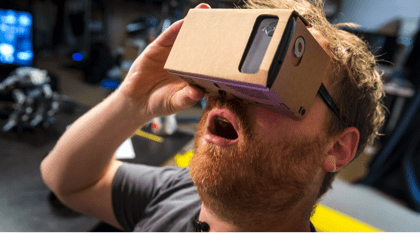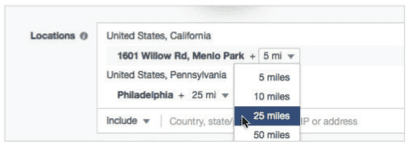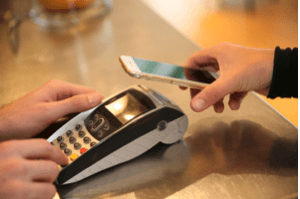How mobile marketing can support bricks and mortar retail
Did you know that 1 in 3 online purchases during this year’s Black Friday were completed on a mobile device? Mobile is now considered a channel in its own right – which is great news for offline retail. That’s right, offline retail. Contrary to what you may think, mobile commerce does not spell the end of real world shopping, it can actually save it!

Merchants who understand that a consumer’s dollars are green no matter where he or she buys, and are able to communicate with them as they constantly move across multiple touchpoints – will reap the rewards. Thanks to mobile, that movement can be glued together. Here’s how:
Targeting users based on their location
One of the major components of a perfect marriage between the physical and digital worlds is location driven marketing and advertising. The first layer includes geo-fencing, which targets users in the retailer’s vicinity or the vicinity of its competitors. But location driven targeting can also be site specific, for example, locations with higher “dwell times” such as train stations, airports - or if you’re selling sports-related products, stadiums. This creates the perfect opportunity for anxious consumers to cross items off their holiday shopping lists.
Here’s what you can do on Facebook:

The second layer of location-driven marketing includes beacon marketing which is used to target users in-store. Beacons are becoming increasingly popular for creating relationships between consumers and retailers. Through the use of a small beacon that can cost as little as $5, retailers can send push notifications with customized messages and ads that can "wake up" an app a consumer has downloaded, even if it isn't open on the device. This can go both ways. For example, a Macy’s in California sends different sizes and styles directly to the dressing room using a chute (!) following an app request.
Next year, beacons are expected to drive $4.1 billion for the top-100 U.S. retailers, and 10x that figure in 2016, according to BI Intelligence.
Mobile coupons and apps for faster checkouts
Coupons, savings, and discounts play a major role in holiday shopping. While consumers have already caught on to the convenience and ease of shopping online, the entire shopping experience can become even faster with mobile coupons and apps that help streamline the entire physical checkout process. When you combine coupons with store apps, you not only eliminate the time wasted hunting down and physically clipping coupons, you also decrease the time and energy spent standing at the register during checkout. With mobile apps, consumers are able to download your app—and, coupons and savings either instantly appear under the store account or, if they prefer, they can still physically scan them in.

Paying for your purchases through mobile payments is another red hot trend, with US mobile payment transactions alone expected to triple in 2015 to reach $8.7 billion. This eliminates wasted time once spent rifling through purses and wallets for credit cards and store discount cards. With mobile, everything you need is safe and secure right inside your phone. Whether used for getting the best deal or just making your payment, consumers are guaranteed the most savings opportunities and the fastest shopping experience at checkout if they’re using your mobile coupons and apps.
Virtual reality makes online shopping real
Virtual reality may seem like a mysterious brave new world that’s years away, but the reality is that VR is here. While many imagine using VR technology with apps like Instagram just to travel the world without leaving their living rooms, virtual reality technology and mobile apps can allow consumers the opportunity to try out products inside the store before purchasing them.
You still have time to set up Google Cardboard headsets like UK retailer John Lewis has done. For next year’s holiday season you can gain inspiration from other retailers like Lowe’s, which has built a Holoroom that allows shoppers to select products from thousands of models that they can then use to design their spaces as they choose; or Target which just celebrated Halloween with a YouTube series and a mobile site that helps trick-or-treaters' find the best houses. Virtual reality provides the entire shopping experience – something many consumers miss through traditional online shopping.
The key for retailers and consumers
Connecting the dots across all channels between email, search, social, display, mobile web, mobile apps, desktop web, and offline shopping, to create the elusive omnichannel consumer journey is still the biggest challenge for retailers and consumers. And although we’ve come a long way, it’s still not 100%. Even tech giants like Facebook and Google, who have hundreds of millions of logged-in users, are limited to their own properties. However, thanks to mobile’s ability to serve as the connective tissue we’ve all been seeking, more and more dots are being connected. And, more and more will follow.
 Shani Rosenfelder
Shani Rosenfelder is a senior marketing manager at
AppsFlyer. He has over 10 years of experience in key content and marketing roles across a variety of leading online companies and startups. Combining creativity, analytical prowess, and a strategic mindset, Shani is passionate about building a brand’s reputation and visibility through innovative, content-driven projects.










